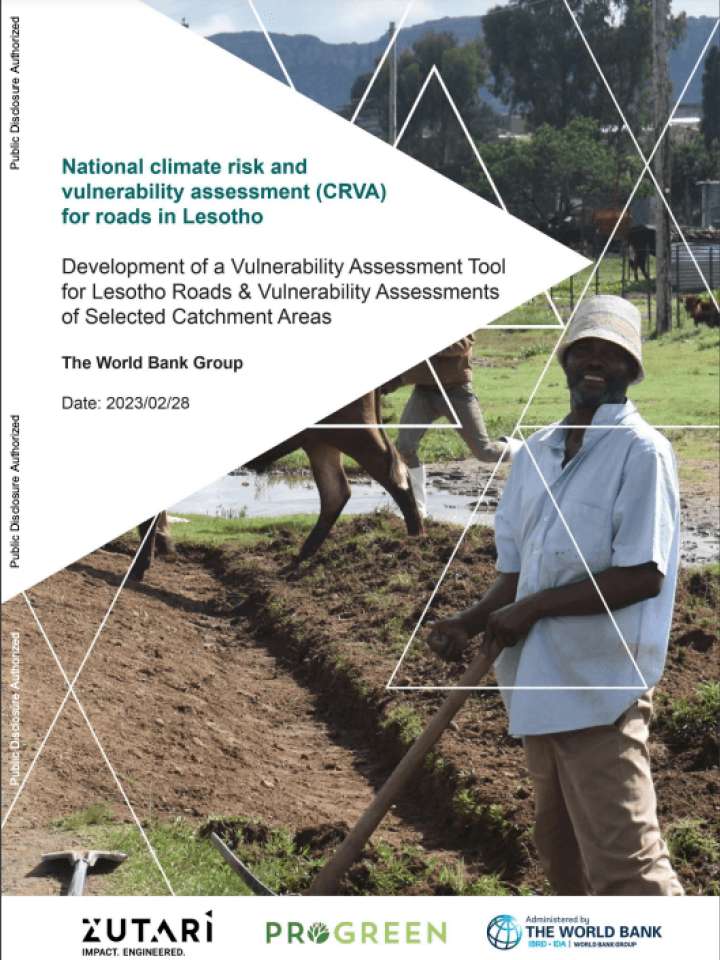National climate risk and vulnerability assessment (CRVA) for roads in Lesotho: development of a vulnerability assessment tool for Lesotho roads and vulnerability assessments of selected catchment areas
The primary aim of this study was to undertake a review of existing frameworks for climate and environment vulnerability assessments for roads and to adapt these to the Lesotho context in line with Southern African Development Community (SADC) protocol on transport, the National Strategic Development Plan of Lesotho, and the South African National Roads Agency (SANRAL) Design Guidelines. The adapted climate and environmental risk framework then formed the basis for developing a climate change risk and vulnerability and assessment methodology/tool.
The report makes the following general recommendations regarding the potential for improving the climate resilience of critical road infrastructure and updating the design guidelines in Lesotho:
- Prioritise investments that improve the climate resilience of roads with a high overall climate-related risk or which are determined to be most critical for connectivity.
- Consider adding paved shoulders to all major roads (A and B roads) to protect the main section of the road from erosion and to improve connectivity of the road with drainage structures.
- Consider increasing design flood requirements for all new drainage structures based on a review of the latest climate change scenarios from the World Bank Climate Change Knowledge Portal.
- Apply a minimum of 900mm culverts to make it easier for maintenance and clearing.
- Factor the impacts of increasing rainfall intensities and temperatures due to climate change into all new road designs and rehabilitation projects.
- Reduce the erosion of minor connecting roads and the subsequent impact on intersecting major roads by paving the first 25m of the minor road where it connects with a major road (A and B) and ensuring the provision of adequate drainage.
- Undertake a review of the conditions of all major bridges to determine their ability to manage increased flood frequencies, including a review of the approaches and embankments. The approaches and embarkments are particularly vulnerable. Additionally, consider flood protection across the entire flood plain and not just at the location of the current river channel.
- Engage with local communities to support the clearing of culverts and identification of priority interventions to reduce the risk to roads as part of a catchment management plan and with support from the local council and technical support from the Roads Directorate.
Explore further
